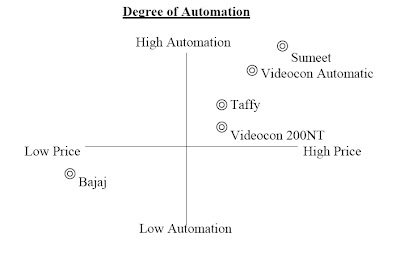Basically, psychological positioning is a communication exercise that follows AIDA: Attention, Interest, Desire and Action model. It is derived from market positioning and tells who the company is, what the product does, and what to expect from the purchase.
The brand name, the look and the packaging must complement the psychological positioning. Consumer behavior is driven more by feelings than rationale, and even the most aptly positioned brand might fail if it does not strike the right chord. Brand ultimately has to build a relationship with the customer. Benefits and benefit gaps are easy to identify through research. Feelings are more difficult to get to. Coffee, for instance, is about intimacy, romance and togetherness. Titan is a gift of appreciation. Lakme and Vareli touch a streak of narcissism in a woman. Brand positioning is thus not just occupying a slot in the mind of the consumers. It is about ruling the heart also.
Another interesting area worth understanding is Perceptual Mapping for Positioning. Perceptual Space Map (PSM) shows the perceived relative positions of products along different dimensions. To do this, the attributes or dimensions of a product are identified by qualitative research like depth interviews. The consumers are then asked to rank each brand along each of the dimensions identified. Statistical techniques are used to reduce a very large number of dimensions to a few significant dimensions.
To illustrate, price and the degree of automation have been identified as the significant dimensions of the washing machines’ market. The perceptual map showing existing brands along these dimensions is given below.
 |
| Perceptual Space Map |
Consider the following:
- Videocon semi-automatic is moderately priced washing machine, and so is Taffy by Rallies. The closer brands on PSM are competing with each other.
- Videocon automatic fills a market niche by being high on automation and moderate on price.
- Bajaj is not competing with Videocon and Sumeet since it is low-priced non-automatic, manual model.
- The low price, high automation niche is still vacant, and offers distinct possibilities. PSM is used to cluster brands into competing groups to define market segments.
- When more dimensions are used, a technique called multiple dimensional scaling (MDS) is used. The computer software is now available.
This concept is a wonderful tool to understand where your brand lies in comparison to other brands in the same category. You could understand their positioning and the positioning of the leader. That would be the benchmark for you to know how consumer perceive that brand.
Be the first to comment on "Psychological Positioning of A Product"